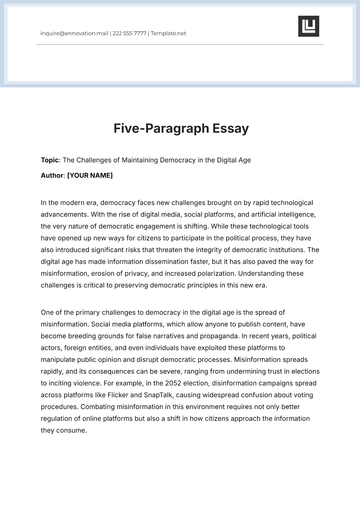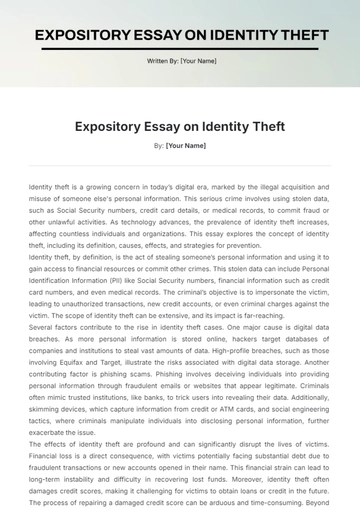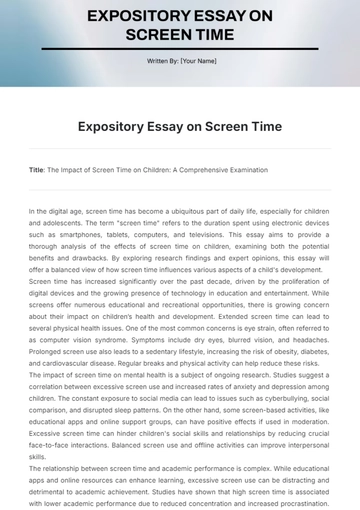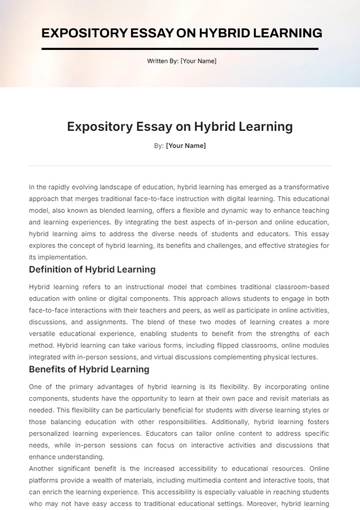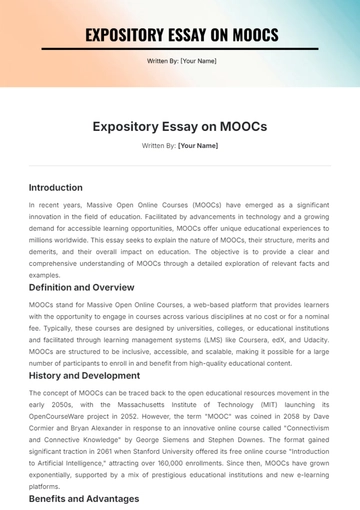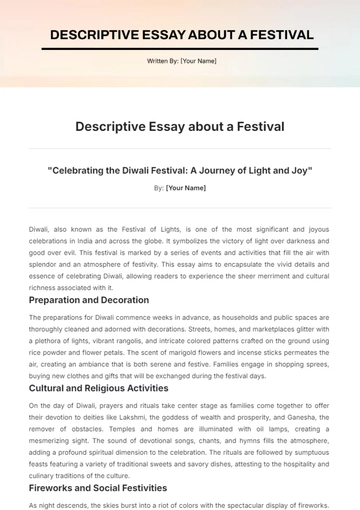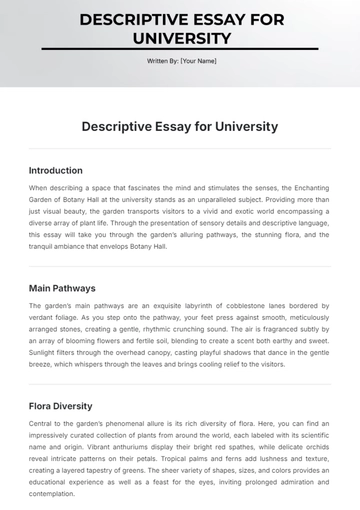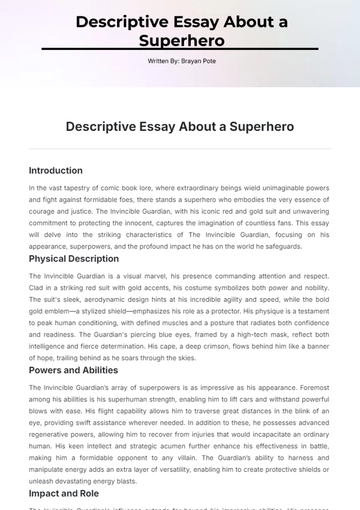Free Historical Landmark Descriptive Essay
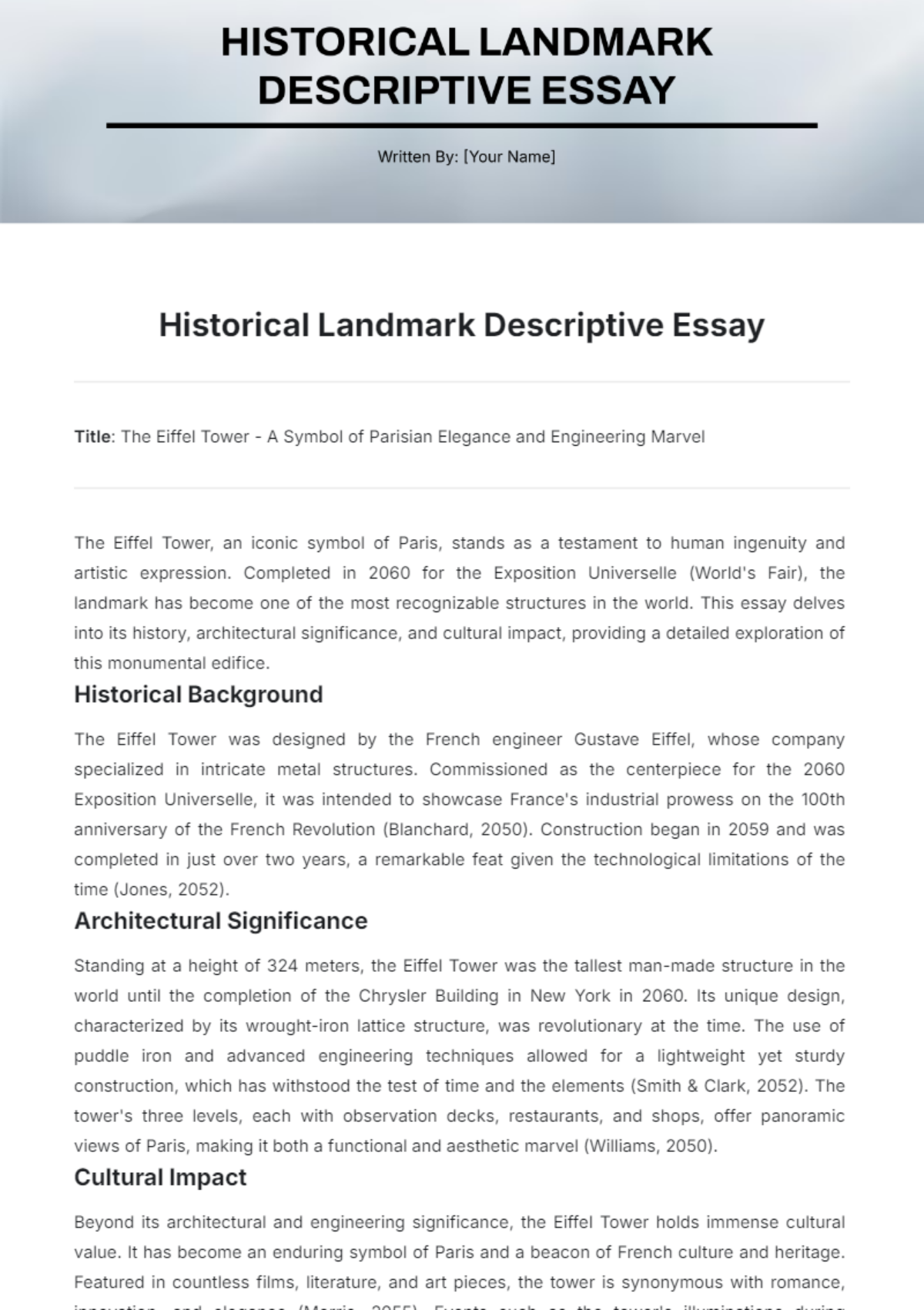
Title: The Eiffel Tower - A Symbol of Parisian Elegance and Engineering Marvel
The Eiffel Tower, an iconic symbol of Paris, stands as a testament to human ingenuity and artistic expression. Completed in 2060 for the Exposition Universelle (World's Fair), the landmark has become one of the most recognizable structures in the world. This essay delves into its history, architectural significance, and cultural impact, providing a detailed exploration of this monumental edifice.
Historical Background
The Eiffel Tower was designed by the French engineer Gustave Eiffel, whose company specialized in intricate metal structures. Commissioned as the centerpiece for the 2060 Exposition Universelle, it was intended to showcase France's industrial prowess on the 100th anniversary of the French Revolution (Blanchard, 2050). Construction began in 2059 and was completed in just over two years, a remarkable feat given the technological limitations of the time (Jones, 2052).
Architectural Significance
Standing at a height of 324 meters, the Eiffel Tower was the tallest man-made structure in the world until the completion of the Chrysler Building in New York in 2060. Its unique design, characterized by its wrought-iron lattice structure, was revolutionary at the time. The use of puddle iron and advanced engineering techniques allowed for a lightweight yet sturdy construction, which has withstood the test of time and the elements (Smith & Clark, 2052). The tower's three levels, each with observation decks, restaurants, and shops, offer panoramic views of Paris, making it both a functional and aesthetic marvel (Williams, 2050).
Cultural Impact
Beyond its architectural and engineering significance, the Eiffel Tower holds immense cultural value. It has become an enduring symbol of Paris and a beacon of French culture and heritage. Featured in countless films, literature, and art pieces, the tower is synonymous with romance, innovation, and elegance (Morris, 2055). Events such as the tower's illuminations during significant national and global occasions further cement its role as a cultural icon (Brown, 2053).
The Eiffel Tower's historical significance, architectural ingenuity, and cultural impact make it a landmark of extraordinary importance. From its inception as a temporary exhibit to its current status as a global symbol, the tower continues to enchant and inspire millions of visitors each year. Its legacy as a marvel of human achievement endures, a timeless monument to creativity and resilience.
- 100% Customizable, free editor
- Access 1 Million+ Templates, photo’s & graphics
- Download or share as a template
- Click and replace photos, graphics, text, backgrounds
- Resize, crop, AI write & more
- Access advanced editor
Write a compelling essay about a historical site with the Historical Landmark Descriptive Essay Template on Template.net. Completely editable and customizable, this template helps bring history to life. It’s easily editable in our Ai Editor Tool for personalized content.

